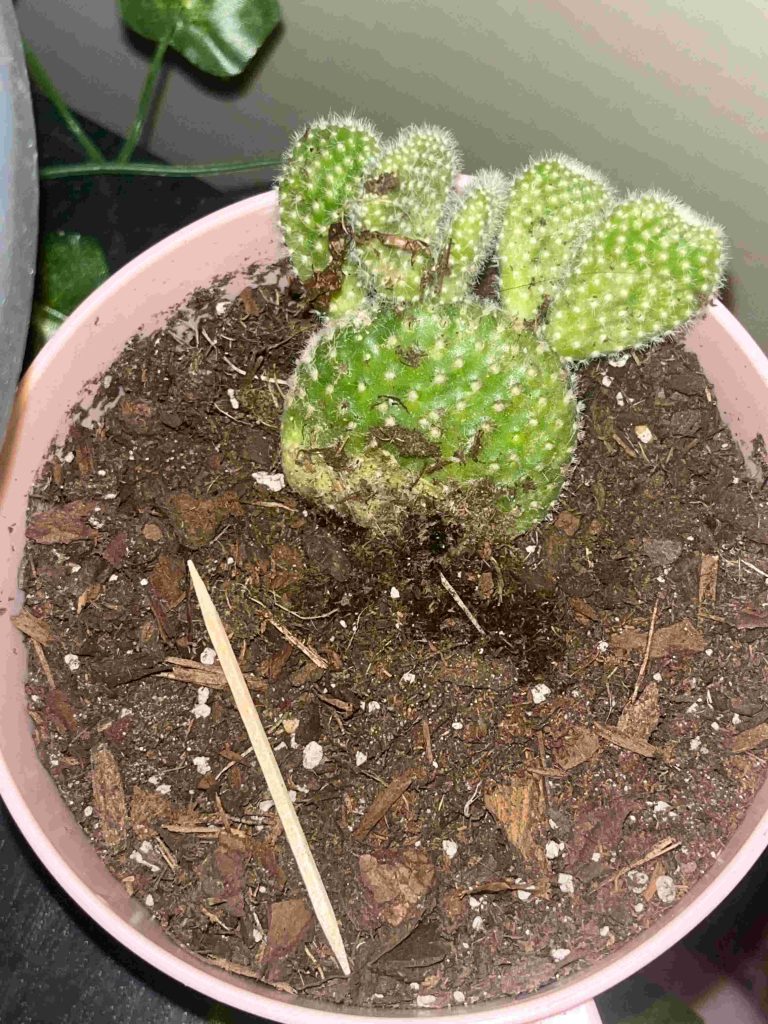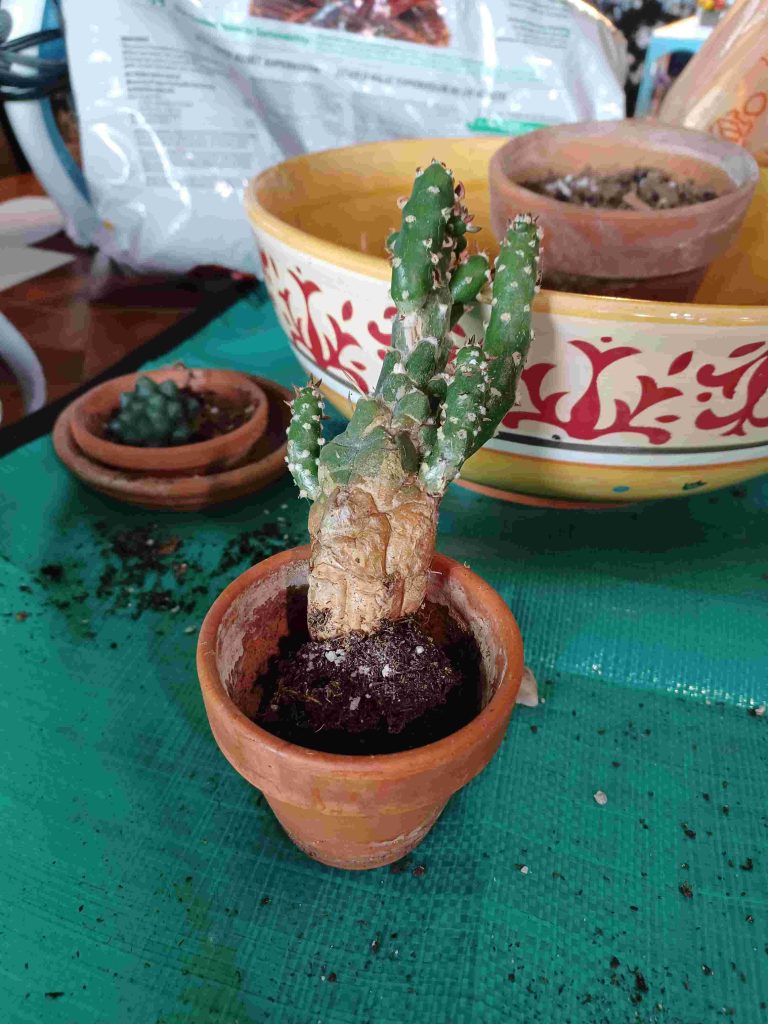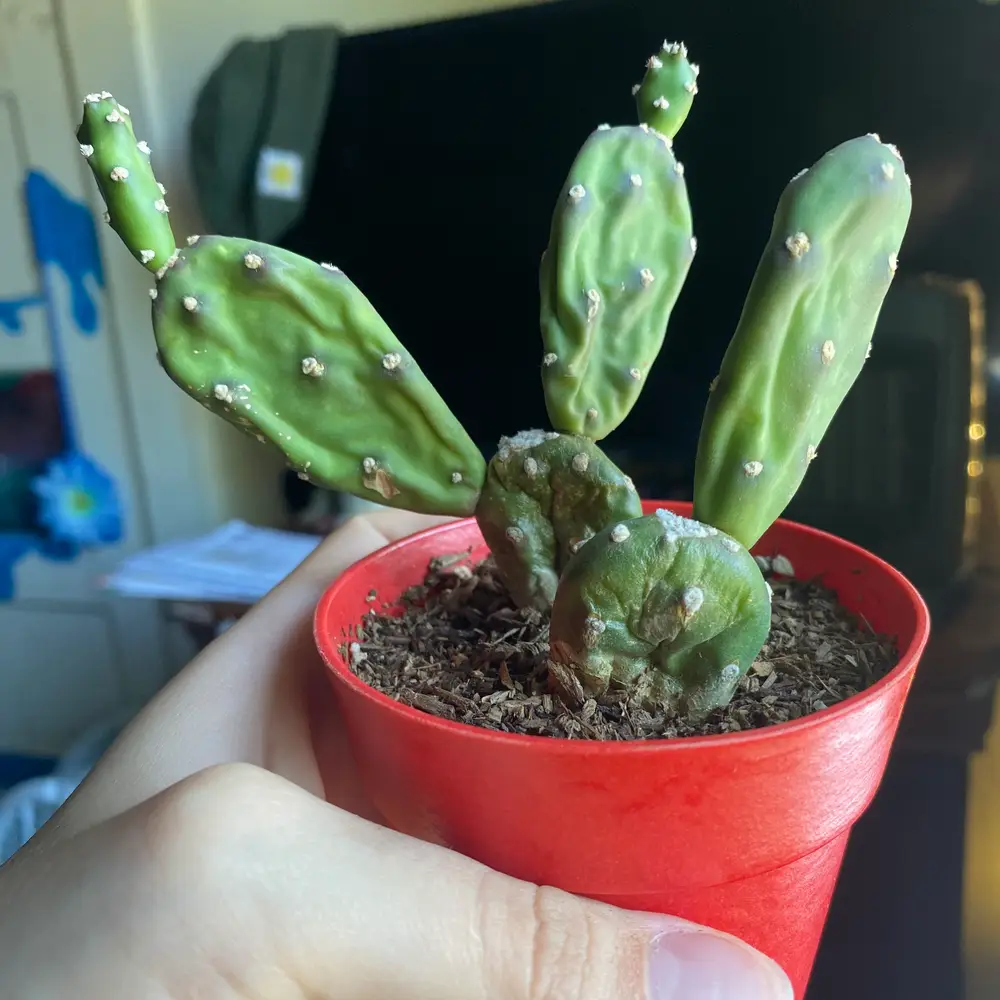Noticed your cactus feeling soft and squishy instead of firm and sturdy? That’s a big red flag! A healthy cactus should be plump, rigid, and resilient, so if yours feels mushy, something is definitely wrong.
But don’t panic just yet! As a seasoned plant expert, I’ve seen countless cactus problems—overwatering, rot, pests, even stress from the wrong environment—and trust me, most of them can be fixed if caught early.
In this guide, I’ll break down the exact reasons why your cactus is turning soft and how you can save it before it’s too late. You’ll learn what’s normal, what’s not, and the simple steps to get your spiky friend back in top shape.
Let’s dive in and get to the root of the problem!
Understanding a Healthy Cactus
Before we dive into the reasons behind a squishy cactus, let’s take a step back—what does a healthy cactus actually look and feel like?
A well-cared-for cactus is firm, plump, and structurally strong. Its surface should feel slightly tough, not soft or mushy. This firmness is because cacti store water inside their stems, allowing them to survive long dry periods without wilting. Unlike leafy houseplants, cacti don’t need frequent watering because they’re designed to thrive in dry, well-draining soil.
So, if your cactus suddenly feels soft, squishy, or deflated, it’s a clear sign that something is wrong. Whether it’s too much water, too little water, rot, or even pest damage, your cactus is crying for help—and the sooner you identify the issue, the better chance you have of saving it.
Let’s get into the most common causes and how to bring your cactus back to life.
Why Is My Cactus Squishy? Common Causes of a Squishy Cactus
If your cactus feels soft and squishy, don’t ignore it—this is its way of telling you that something is seriously wrong. Cacti are tough plants, but when their structure starts breaking down, it’s usually due to one of these common issues. Let’s go through them one by one so you can quickly diagnose the problem and take action before it’s too late.
A. Overwatering & Root Rot (The #1 Cause!)
If I had a dollar for every overwatered cactus I’ve seen, I’d probably own a greenhouse by now. Overwatering is the leading cause of squishy cacti, and it happens faster than most people realize.

How Overwatering Damages Your Cactus
Cacti store water in their stems, which is why they stay firm and plump. But when they get too much water, their roots can’t breathe—this leads to root rot, which then spreads upwards, making the entire plant soft, mushy, and sometimes smelly.
Signs of Overwatering & Root Rot
- Soft, mushy spots (usually starting at the base).
- Yellowing or blackening of the stem.
- A foul, rotten smell coming from the soil or plant.
- Shriveling and collapse (in severe cases).
How to Fix It
- Check the roots: Gently remove your cactus from the pot and inspect the roots. If they’re black, brown, or mushy, they’re rotten.
- Trim off the damage: Use sterilized scissors to cut away all rotten roots and soft spots.
- Let it dry: Place your cactus in a dry, shaded area for a few days to allow it to heal before repotting.
- Repot in fresh, well-draining soil: Use a cactus mix with sand or perlite to prevent future moisture issues.
- Adjust your watering schedule: Only water when the soil is completely dry—usually every 2-3 weeks, depending on the climate.
Expert Tip: If you’re unsure whether your cactus needs water, stick your finger into the soil about an inch deep—if it’s even slightly damp, wait a few more days before watering!
B. Underwatering & Dehydration
Wait, can a cactus become squishy from too little water? Absolutely—but the symptoms are a little different.
How Underwatering Affects Your Cactus
When a cactus is dehydrated, it starts using up its stored water reserves, causing it to shrink and wrinkle. However, instead of becoming mushy (like in overwatering), it loses firmness and collapses inward, almost like a deflated balloon.
Signs of Dehydration
- Wrinkled, shriveled skin instead of mushy spots.
- A deflated look, as if the cactus is shrinking.
- Dull, dry appearance rather than blackening or rotting.
How to Fix It
- Rehydrate slowly: Give your cactus a small amount of water, wait a few days, then water again—this prevents shock.
- Adjust watering habits: Water every 2-3 weeks during warm months and once a month or less in colder months.
- Check humidity levels: If your home is very dry, consider placing the cactus in an area with better air circulation.
Expert Tip: Never flood a dry cactus with water all at once—it can go into shock! Slow, steady rehydration is the key to recovery.
C. Fungal or Bacterial Infections
If your cactus feels squishy and discolored (especially with black or brown spots), a fungal or bacterial infection might be to blame. These infections attack weakened plants, often after overwatering, physical damage, or poor ventilation.
Signs of Infection
- Soft, sunken brown or black spots.
- A spreading mushy texture, often starting at the base.
- A bad odor, indicating bacterial breakdown.
How to Fix It
- Isolate the infected plant: If you have other plants nearby, move the cactus away to prevent spreading.
- Remove infected areas: Cut off all affected parts using a sterilized knife or scissors.
- Treat with fungicide: Apply a copper-based fungicide or a diluted hydrogen peroxide spray to stop further infection.
- Improve air circulation: Make sure your cactus is in a well-ventilated area with indirect sunlight.
Expert Tip: If the infection has spread too much, the best option might be to propagate a healthy part of the cactus and start fresh.
D. Pests & Infestations
Believe it or not, tiny pests can be the reason behind your cactus turning soft! Mealybugs, spider mites, and scale insects love to suck the juices out of your plant, weakening it and causing soft spots.
Signs of Pest Damage
- Sticky, cotton-like residue (mealybugs).
- Tiny red or brown dots moving on the plant (spider mites).
- Hard, round brown bumps stuck to the surface (scale insects).
How to Fix It
- Wipe off pests: Use a cotton swab dipped in rubbing alcohol to remove them.
- Apply neem oil: Spray neem oil or insecticidal soap to prevent reinfestation.
- Check nearby plants: Pests spread fast, so treat all nearby plants as well.
Expert Tip: Regularly check your cactus for pests—catching them early makes removal much easier!
E. Temperature Stress & Frost Damage
Cacti may be tough, but they’re not invincible against extreme temperatures. If your cactus has been exposed to cold drafts, frost, or extreme heat, it could turn mushy due to cellular damage.
Signs of Temperature Stress
- Dark, squishy patches (especially after cold exposure).
- A sunken or shriveled appearance.
- Discoloration, often brown or black areas.
How to Fix It
- For cold damage: Move the cactus to a warmer, drier spot and avoid watering until it recovers.
- For heat stress: Keep it away from direct afternoon sunlight and ensure proper airflow.
Expert Tip: If your cactus is outdoors, bring it inside when temperatures drop below 10°C (50°F) to prevent frost damage.
F. Poor Drainage & Wrong Soil Type
Even if you’re watering correctly, using the wrong soil or a pot without drainage can still cause root rot and squishiness.

How to Fix It
- Use a well-draining cactus mix (or make your own with sand/perlite).
- Always plant in a pot with drainage holes to let excess water escape.
- Avoid compacted soil—fluff up the mix every few months for aeration.
Final Thoughts on Diagnosing a Squishy Cactus
Figuring out why your cactus is squishy is all about observing the symptoms and identifying the root cause. Now that you know what to look for, the next step is fixing the issue before it’s too late!
Up next, I’ll guide you through step-by-step solutions to help save your cactus and prevent future problems.
How to Prevent Your Cactus from Becoming Squishy Again
Now that you know how to fix a squishy cactus, let’s make sure it doesn’t happen again. Prevention is always easier than treatment, and with a few simple adjustments, you can keep your cactus firm, healthy, and thriving.
A. Watering Smart: The Golden Rule for Cactus Care
Overwatering is the #1 reason cacti turn mushy, so getting your watering schedule right is crucial.
1. Follow the “Soak and Dry” Method
- Water only when the soil is completely dry—never on a set schedule.
- Stick your finger into the soil or use a moisture meter to check.
- When it’s time to water, give it a deep soak, but let all excess water drain out.
Pro Tip: If you’re unsure whether to water, wait a few more days. A cactus can survive drought much better than too much moisture!
2. Adjust Watering Based on Season
- Spring & Summer: Water every 2-3 weeks (or when dry).
- Fall & Winter: Water once a month or even less—cacti go dormant and need very little moisture.
B. Choosing the Right Soil & Pot for Perfect Drainage
Even if you water properly, bad soil or a poor pot can still lead to rot. Here’s how to set up the perfect home for your cactus:
1. Use Fast-Draining Cactus Mix
- Regular potting soil holds too much moisture, which is bad for cacti.
- Use a store-bought cactus mix or make your own by mixing:
✔ 50% sand or perlite
✔ 40% potting soil
✔ 10% pumice or small gravel
2. Pick the Right Pot
- Terracotta pots are ideal—they absorb excess moisture and help soil dry faster.
- Always choose a pot with drainage holes.
Avoid glass or ceramic pots without holes—they trap water, increasing the risk of rot.
C. Placing Your Cactus in the Right Spot
Cacti need plenty of light to stay strong and healthy. If they don’t get enough, they can weaken, making them more vulnerable to rot.
1. Provide 6–8 Hours of Bright, Indirect Sunlight
- A south or east-facing window is best for indoor cacti.
- If your cactus starts stretching or looking pale, it needs more light.
2. Use Grow Lights if Needed
- If you don’t have enough natural light, a full-spectrum LED grow light can help.
- Keep it on for 10-12 hours a day for best results.
D. Keeping Pests & Fungal Infections Away
Pests like mealybugs and fungal spores thrive in damp conditions, so keeping your cactus dry and well-ventilated is key.
1. Check Your Cactus Regularly
- Look for white cotton-like bugs (mealybugs) or tiny webs (spider mites).
- If you see any, wipe them off with rubbing alcohol and use neem oil to prevent them from coming back.
2. Avoid Overcrowding
- Cacti need good airflow—don’t pack them too close together.
- Stagnant air and humidity create the perfect environment for mold and rot.
E. Protecting Your Cactus from Extreme Temperatures
Cacti love warm, stable conditions. Extreme heat or cold can stress them out, making them vulnerable to issues like rot.

1. Keep Your Cactus Away from Cold Drafts
- Avoid placing your cactus near air conditioners, open windows, or cold drafts in winter.
- If temperatures drop below 10°C (50°F), consider bringing it to a warmer spot.
2. Gradually Introduce More Sunlight in Summer
- If moving your cactus outdoors, don’t place it in direct sun right away—it can get sunburned.
- Start with partial shade, then gradually increase exposure over a few weeks.
Final Thoughts: A Happy, Healthy Cactus for Years to Come
Caring for a cactus isn’t complicated, but small mistakes can lead to big problems—like a squishy, rotting plant. By following these simple prevention steps, you’ll keep your cactus firm, healthy, and thriving for years.
✔ Water only when dry (and less in winter)
✔ Use fast-draining soil and a pot with holes
✔ Give it plenty of sunlight
✔ Watch out for pests and fungal infections
✔ Protect it from extreme temperatures
With the right care, your cactus won’t just survive—it will thrive.
Save Your Cactus Before It’s Too Late!
A squishy cactus might seem like bad news, but as you’ve learned, it’s not the end of the road—as long as you catch the problem early! The key to saving your plant is identifying the cause quickly and taking the right action. Whether it’s overwatering, root rot, sunburn, or pests, knowing what to look for can make all the difference.
The best way to keep your cactus happy? Regular observation and preventive care. Check for any changes in texture, color, or firmness, and adjust watering, sunlight, and soil conditions accordingly. A little consistent care goes a long way in keeping your cactus healthy and thriving.
Now, I’d love to hear from you! Have you ever dealt with a squishy cactus? What worked (or didn’t) for you? Drop your experience in the comments—let’s help each other keep our cacti in top shape!
